–– 23rd ESBF Forum, May 26th, Shenzhen, China
Since the victory of Alpha Go in the chess duel, AI has become a lot more popular. Breakthroughs in technology and improvements of computing power has paved a pathway for AI to enter our daily life, e.g. AI speakers and face recognition. AI places strong requirements on computing capacity and real-time response. Meanwhile edge computing is also rising, largely correspond with the developments in Internet of Things (IoT) and embedded system.
In this era, how do we prepare for the AI storm on the horizon? What are the directions strongly related to IoT and embedded system industries? How do we, researchers and engineers seize the opportunity?
Embedded System Beijing Forum invited well-known scholars and experts to the 23rd forum, titled “Leveraging AI to Advance Internet of Things”, to discuss and answer the questions. The forum was hosted by ESBF and Beihang University Shenzhen Emerging Industry Research Center, organized by Beihang University Shenzhen IoT Research Center and IoT Cafe, and sponsored by Beihang University Press and Tron Space.
The forum consists of an academic gathering in the morning, “Research and Thoughts on AI in Embedded System”, hosted by ESBF secretary in chief Allan He.
Embedded System in the Era of Resource Net
Limin He, Beihang Univerisity
Microcontroller and Embedded System Application journal chief editor Prof. Limin He introduced the future of unbiased AI and resource network. He suggests we can view block-chain outside of the famous BitCoin application, but from the perspective of IoT. Block-chain can be an decentralized social resource exchange (resource/value network), which can induce a third revolution of the Internet era. The ultimate goal of internet is to include “things” and resources, thus block-chain can be an important subject in IoT and embedded system industries.
In the transition from the traditional Internet to IoT, the key of “connected things” lays in embedded system. As block-chain is becoming increasingly popular, embedded system can help digitalize resource and push IoT further.
Block-chain utilizes technologies from multiple domains like digitization, AI, cryptography and game theory, but at the center of it is a fair and decentralized contracting infrastructure. This means a need of unbiased AI is ever growing. In March, IBM predicted that in five years, three categories of technology related to block-chain will shape the world in five years: crypto anchor, lattice-based cryptography and unbiased AI. IBM also plan to introduce crypto anchor chip, which is believed to be the start of block-chain solution in IoT.
Professor He sees a major change in the market, and a transition to information network/resource network in the next two decades. Embedded system definitely has a role to play.
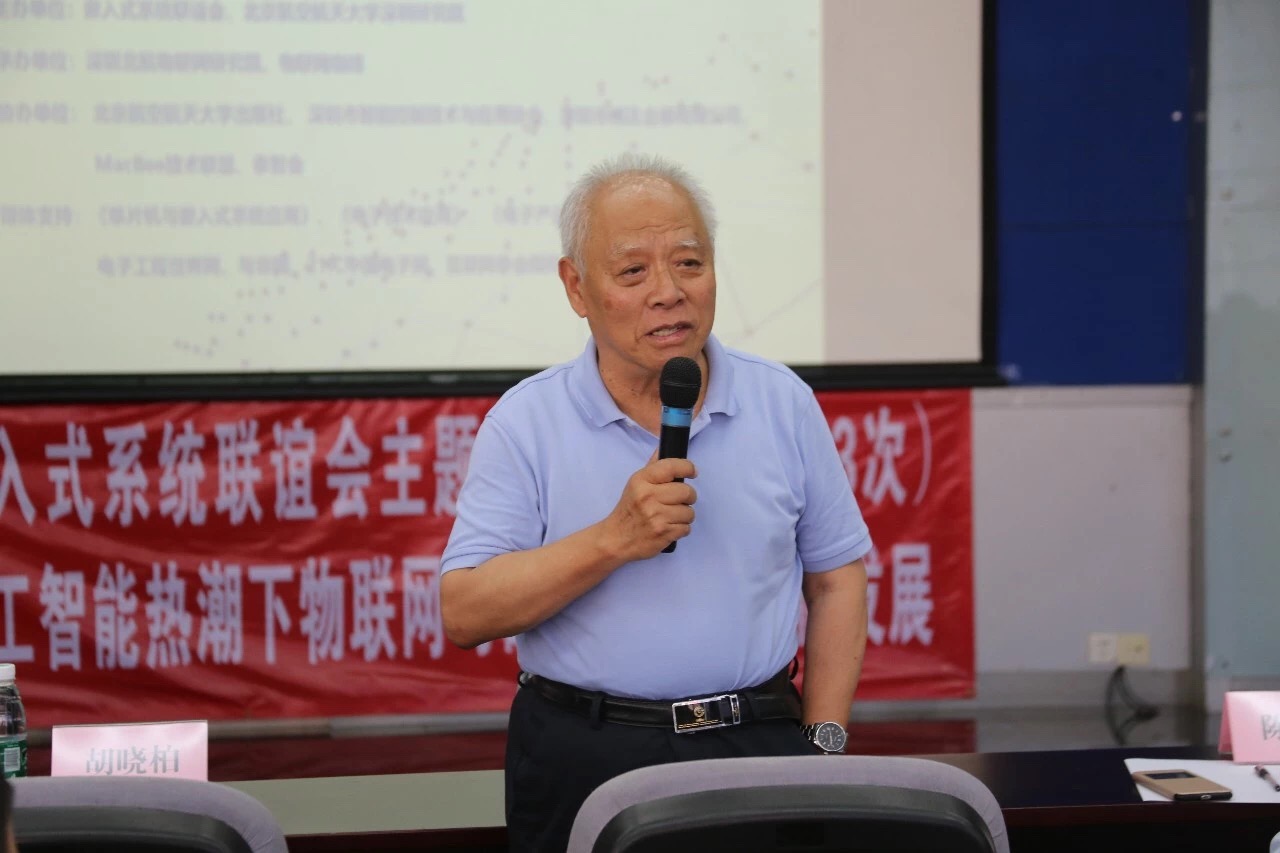
AI is Changing Our Vision
Yimei Kang, Beihang University
AI brings evolutional and irreplaceable changes as well as new use stories to the technology world. Analyzing the current status quo of AI in domestic Internet giants like Baidu/Tencent/Ali/Xiaomi, Prof. Kang predicts that AI will move from the cloud to the endpoint, and therefore make devices more intelligent.
Computer vision accounts for 42% of the AI market and rising. However, Kang realized that the attention to AI as a concept is far more than the actual products. Productionalizing AI requires algorithm innovation, software/hardware R&D and integration engineering. Embedded system also have strong demands on AI algorithm, on real-time response and resource footprint.
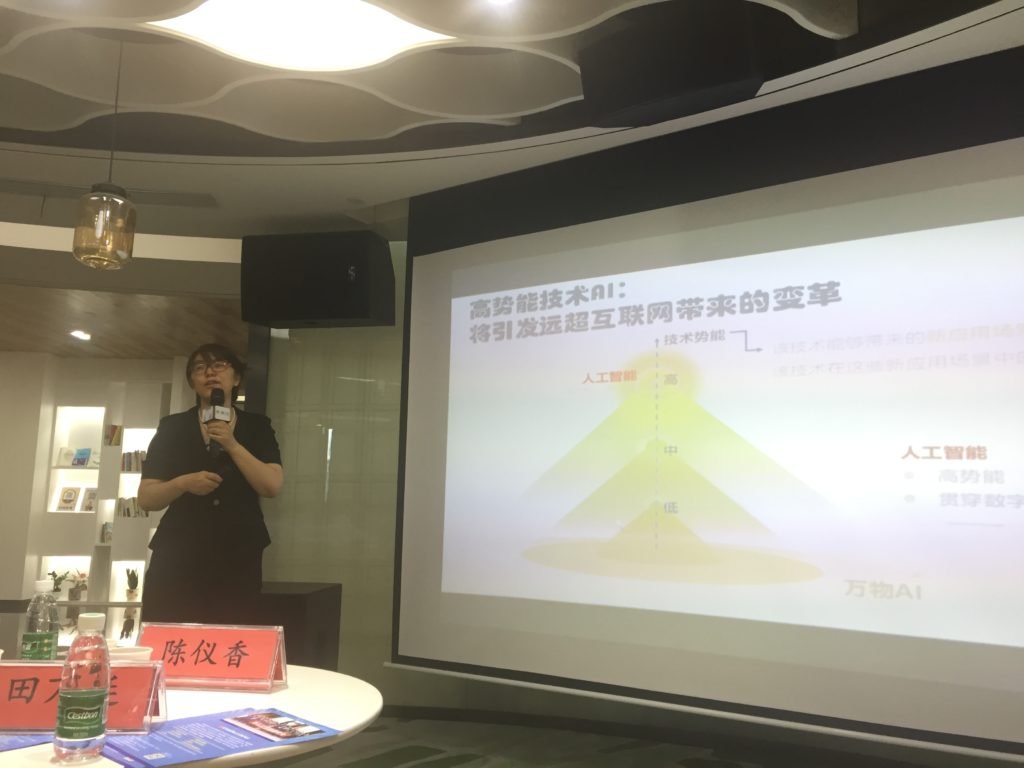
Intelligent System and Optimized System Architecture
Yixiang Chen, East China Normal University
According to Prof. Chen, intelligent system is an integration of embedded technology, software engineering and AI, making it capable to make judgments and decisions to a certain extent. A good intelligent system requires an optimized system design/architecture: software/hardware spec, hardware design, interface implementation etc. Using examples of traffic sign recognition and automatic parking, Chen detailed a complete smart system design that can save a lot of trial-and-error.
Also in the meet-up, Prof. Kai Huang from Sun Yat-Sen University introduced the developments of drone and retina injection operation robot in his university.
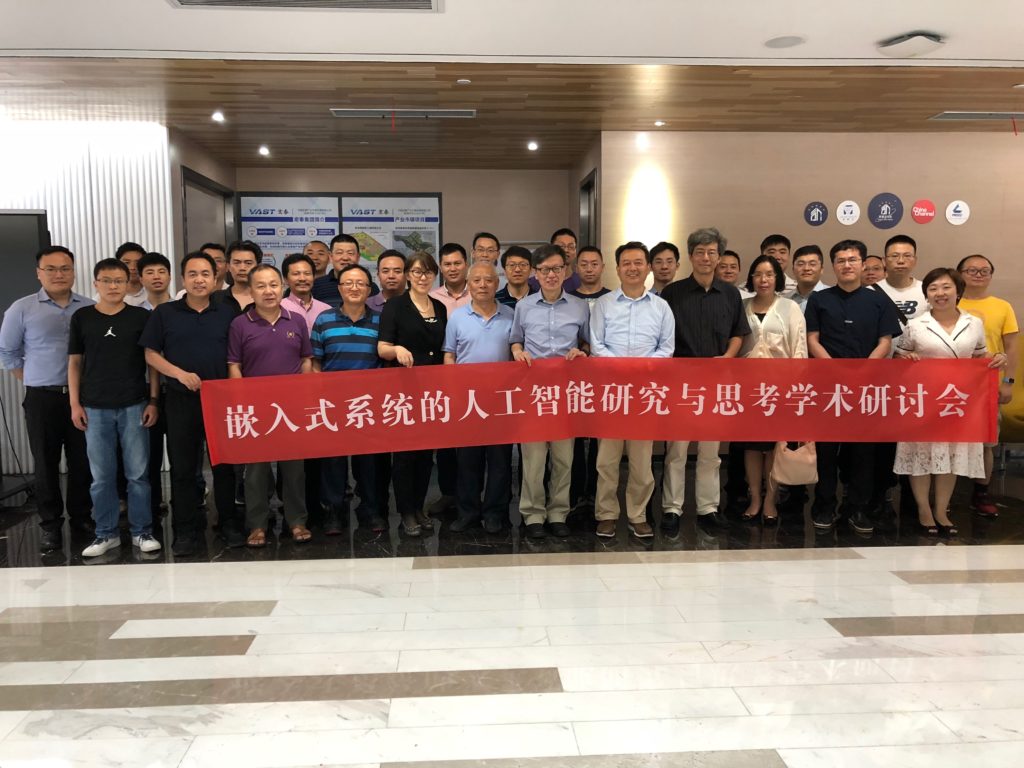
In the afternoon, Beihang University Shenzhen IoT Research Center Execution Dean Gaosheng Cai hosted the entrepreneur seminar.
IoT OS and Edge Computing: New Trends of Embedded System and IoT
ESBF Secretary in Chief, Allan He
Technological innovation has shifted from cloud computing and IoT to edge computing and AI; high-efficiency, reliable and low-power networking, green embedded system technology and functional safety/information security are three keys to an intelligent society.
There are certainly impacts with many acquisitions in the semiconductor industry: mainstream embedded computing entering IoT and AI; new technology and business model in sensors and edge computing; edge computing will be contributing to real-time computing capacity of embedded AI devices. Allan also detailed some use cases of edge computing.
A growing IoT must be accompanied by IoT OSes. Different than traditional embedded OS, IoT OSes leverage cloud platform to bring new profit points and business models to IoT applications. Allan then introduced a few popular IoT OSes like ARM mbed OS, Huawei LiteOS and Amazon FreeRTOS (derived from open source RTOS), and made a final remark on the importance of IoT security.
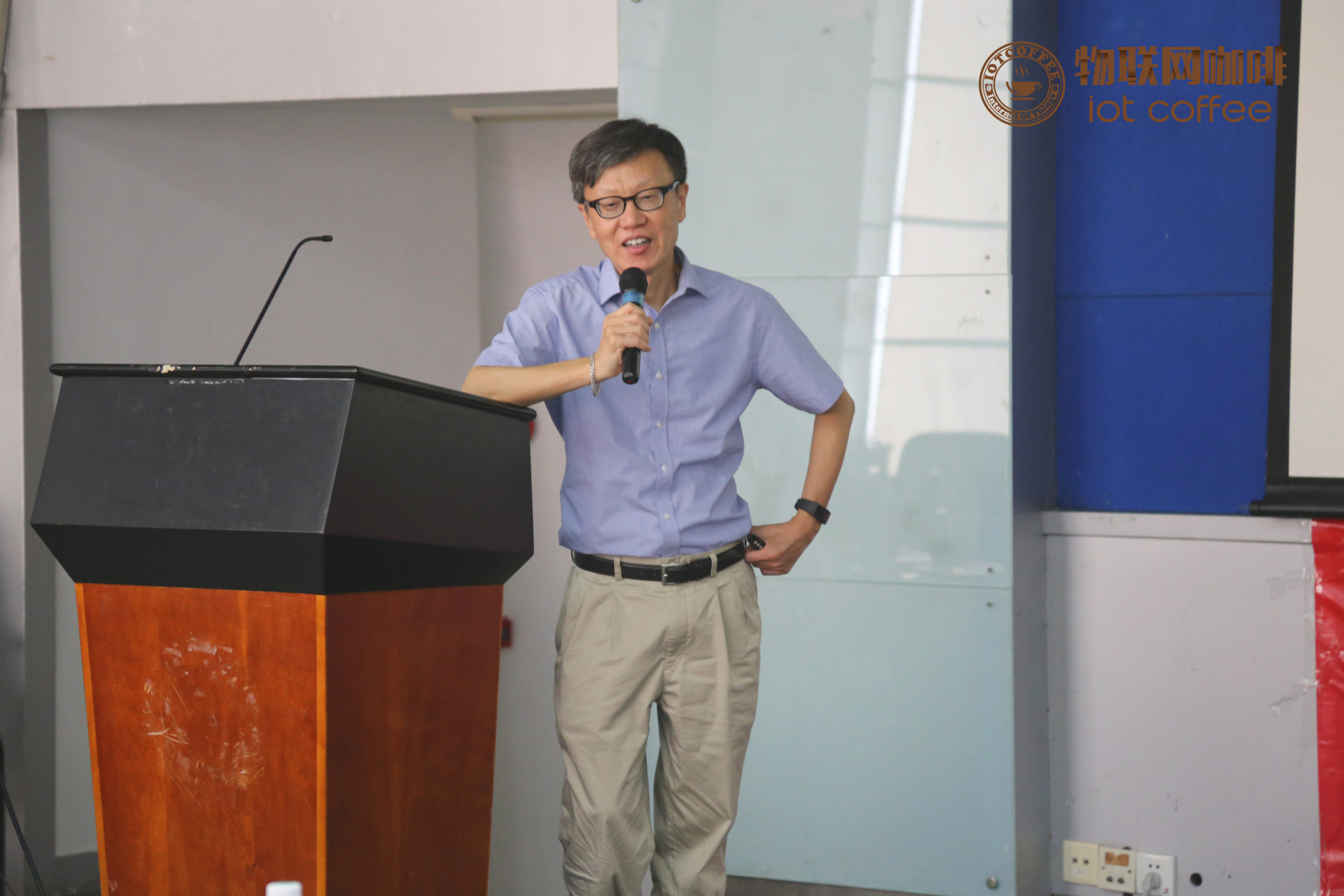
Accelerating AI Deployment with FPGA
Dr. Yuan Yao, Beijing V3 Technology
Dr. Yao introduced his company that works in the areas of wireless communication band security, AI vision and NBC protection monitoring, all of which are based on deep learning platforms. The core technologies in deep learning are: smart learning algorithm, high computing power, big data, user stories and a mature business model.
There are multiple methods to form a deep learning platform: CPU, GPU, CPU+GPU, ARM+FPGA and TPU+SoC etc. Dr. Yao suggests that FPGA is particular suitable in prediction model. The dynamic re-configure ability of FPGA means the system can switch to a new design and optimize for a different workload in seconds. However, the difficulty of development, and a higher entry bar limit the application of FPGA; and that is what V3 Technology is focusing on solving. With EagleGo solution, engineers can use Xilinx SDSoC procedure with C/C++ and deploy a system in hours. Dr. Yao also detailed several scenarios, like convoluted kernel acceleration and object-categorizing camera.
AWorks is the Swiss Army Knife in RT Kernel
Ligong Zhou, ZLG Electronics
Zhou believes software design should aim at deducing overall cost. Considering the people factor, software engineering is more like economics than computer science. It would be hard to develop a product that is both popular and of low cost without a change of mindset. ZLG Electronics supplies an industrial level IoT ecosystem: “Chip+AWorks Software Platform” for designing high-value modules/chips/instruments, connecting to ZWS IoT cloud and leveraging big data with wired or wireless connection.
Ligong further suggested that AWorks is the Swiss army knife in ER Kernel. With a minimum kernel it can runs with only 1kb RAM and 2kb ROM, but yet provide OS services like task, semaphore, mutex and message queue. Unlimited number of tasks, 1024 priority levels and multiple tasks on the same priority are supported. All modules can be instantiated statically to reduce memory leak. AWorks modules are designed to have customization in mind, user can truly tailor a most suitable OS. The usually tricky USB driver is also very simple to use; with just two lines of code, most of USB devices like flash drive will start to work flawlessly.
There are multiple flavors of AWorks distribution: wireless core version, standard core version, sdk etc..
AI and Edge Computing are Essential in IoT
Jun Zou, Ayla Networks
Zou believes that the core of IoT is scale. But with the industry still working on transition, there are a lot of fragments and information islands. Companies are all investing in IoT but so far only result in limited scale. Platform + module should be the key to develop a strategy, and AI and edge computing will certainly play a role in there.
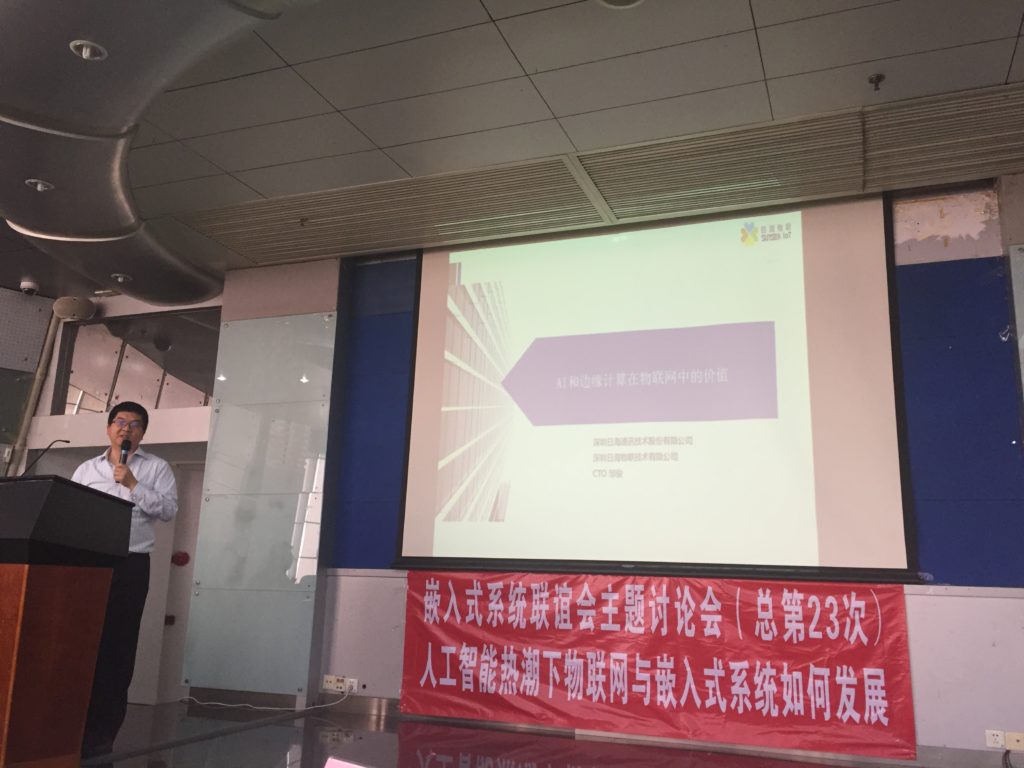
ADAS System has a Bright Future
Weiwei Zhang, Zhongke Longzhi Automobile Technology
Weiwei predicted that 2020 would be the start of a golden decade of autonomous driving. He also forecast the trend of ADAS: current-2019 on safety warning, namely camera for driver behavior detection, frontal collision warning, lane keep warning, driver identity detection and pedestrian warning etc; 2019-2020 on driving assistant, namely radar + camera for adaptive cruise control, automatic braking, traffic assistant, lane keep assist and automatic parking etc.; 2020-2025 for limited scenario automatic driving, namely seonse + V2X application on route planning, control strategy and car control. With the example of NIO ES8, Zhang explained the application of ADAS.
Robots and the Intelligence Era
Guoping Zhang, Hans Robot
In the era of “intelligence”, robots have become increasingly common in many areas. Guoping introduced the robot lineup from Hans Robot, including human-robot interaction robot Elfin , mobility robot AGV and STAR, and briefed on the core drive and control technologies of robot design: high torque hollow motor, servo driver, absolute encoder, high-speed bus, electromagnetic, sensor and HD decelerator assembling. He also mentioned that the core components are already domesticated. Currently, robots from Hans Robot are seen in industrial, medical, semiconductor, and service fields.
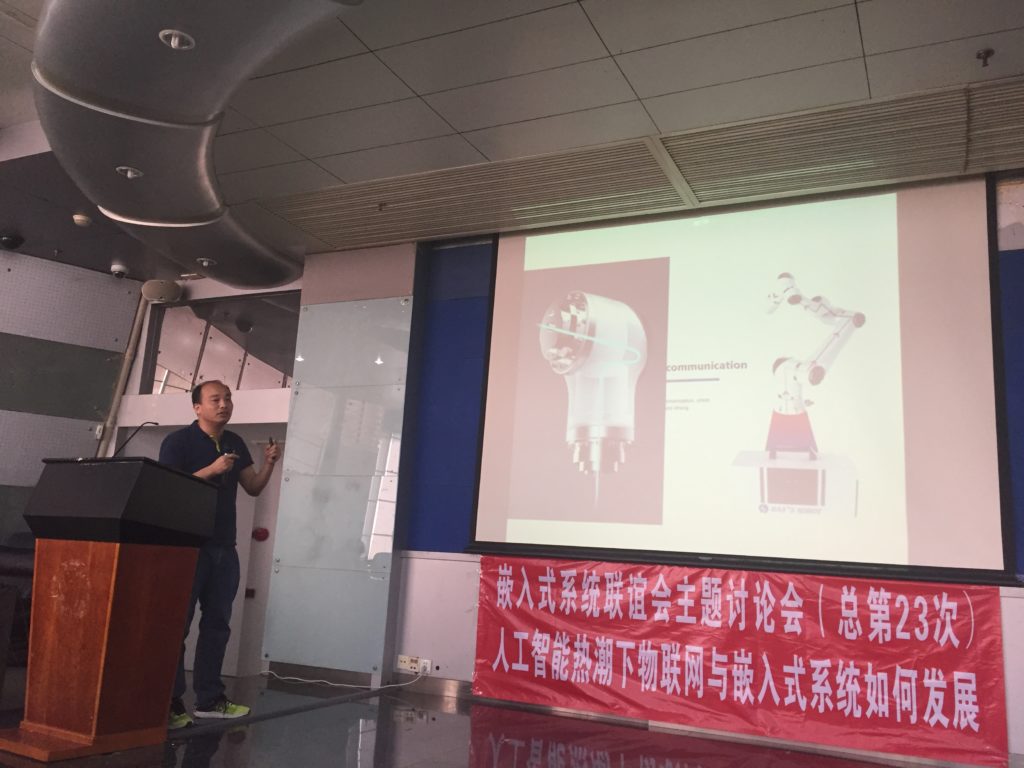
After the speeches, engineers, experts and scholars hosted a heated discussion on technological and industrial issues. It was widely accepted that practitioner should seize the opportunity of AI and contribute to the needs of the society. More than a hundred industrial and academic attendees participated in the discussion. Beihang University Press Embedded System branch brought IoT and embedded publications to the meeting. The forums was hosted in Shenzhen Nanshan Technology Park Virtual University.
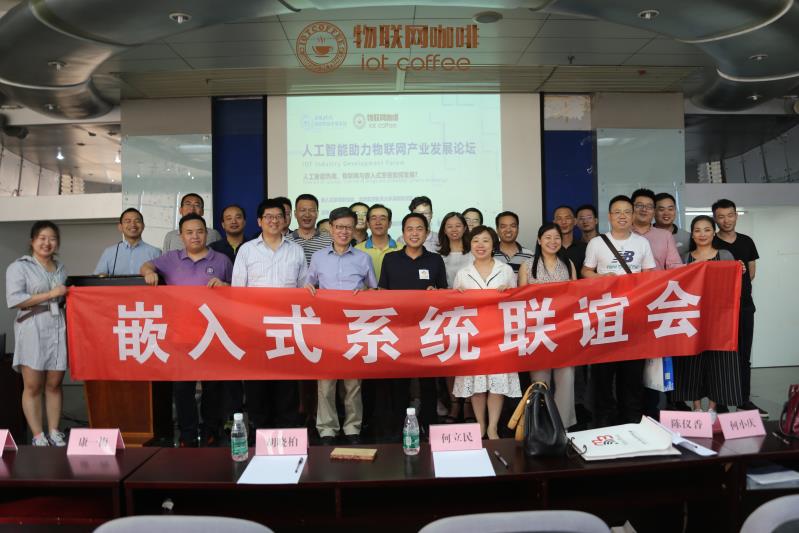
Agenda & Keynotes Download
Date and Time: May 26th 2018, 9:30am-12:00pm & 1:30pm-5:00pm
Location: Shenzhen Hi-tech Park – Dachong Center 21st level (academic seminar) / Virtual College 2nd floor auditorium (entrepreneur forum)
Academic Seminar: AI in Embedded System
Host: Allan He, Secretary in Chief, ESBF
| Time | Topic | Speaker |
| 9:00-10:00 | Opening speech | |
| 10:00-10:30 | AI without Bias and the Future of Resource Network | Limin He, Editor in Chief and Professor, Beihang University |
| 10:30-11:00 | Optimizing Designs with Intelligent System | Yixiang Chen, Professor, East China Normal University |
| 11:00-11:30 | Everything AI: AI Enabling Embedded Endpoints | Yimei Kang, Professor, Beihang University |
| 11:30-12:00 | Retina Surgery Robot | Kai Huang, Professor, Zhongshan University |
Entrepreneur Seminar: AI Accelerating IoT Development
Host: Gaosheng Cai, Executive Dean, Beihang University Shenzhen IoT Research Center
| Time | Topic/Item | Speaker/Comment |
| 13:30-13:45 | Registration | |
| 13:45-14:00 | Introduction | |
| 14:00-14:30 | Embedded System Technology and IoT Development Trend | Allan He, ESBF |
| 14:30-15:00 | Leverage FPGA for Embedded System AI Deployment | Dr. Yuan Yao, Beijing V3 Technology |
| 15:00-15:30 | Ecosystem of Industrial IoT | Ligong Zhou, ZLG Electronics |
| 15:30-15:40 | Break | |
| 15:40-16:00 | Robot Coordination and Hybrid AGV Navigation | Guoping Zhang, Hans Robot |
| 16:00-16:20 | Prospect of ADAS System | Weiwei Zhang, Zhongke Longzhi Automobile Technology |
| 16:20-16:40 | Edge Computing and AI Applications in IoT | Jun Zou, Ayla Networks |
| 16:40-17:00 | Discussions and Q&A |
